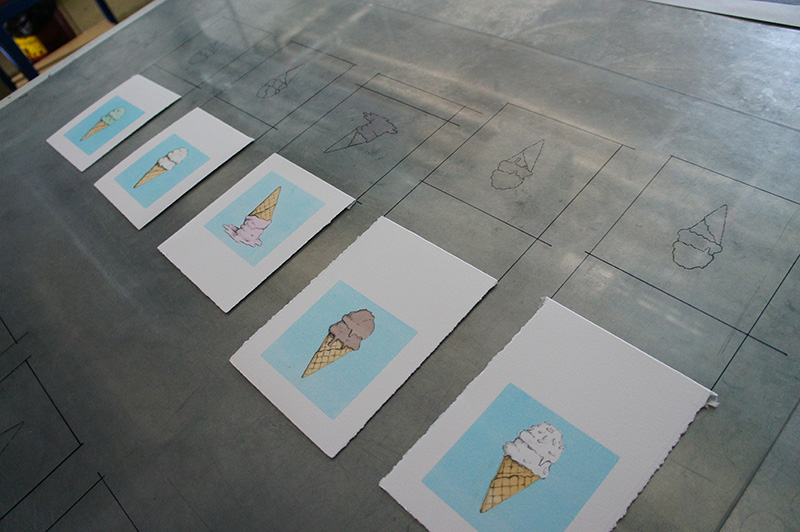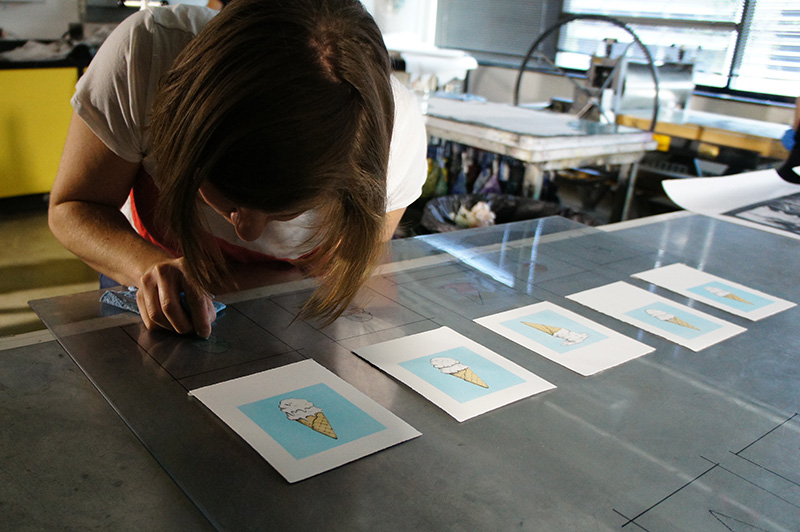This blog is one of a six-part series highlighting the processes behind printmaking and the art shown in the exhibition that was on view May 26 – July 22, 2017, titled 528.0 See our YouTube channel for more printmaking videos over the coming weeks.
Monotype is a painterly process that utilizes a printmaking press to create a unique image that can never be reproduced. It is this distinction of not having a reproducible matrix that makes monotype different from the four printmaking processes of relief, intaglio, lithography, and screen printing. MSU Denver BFA Painting graduate Claire Hays will show us their unique approach to monotype using transparent inks and templates.

A drawing or painting on a smooth surface like a copper etching plate, zinc, glass, or acrylic glass is pressed and transferred to paper to create a monotype. Ink can also be applied to the plate and removed with brushes, rags, or other found objects in a subtractive technique. Most of the ink is removed during the initial press and reprinting the same matrix can create a ghost print. This unique result which can not be reproduced is why monotype is not considered a true printmaking technique.

In your opinion is it fair to separate monotype from the other printmaking processes because these images cant be reproduced with a matrix?
